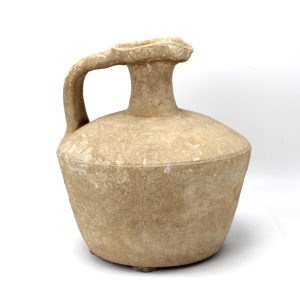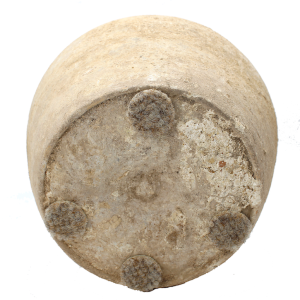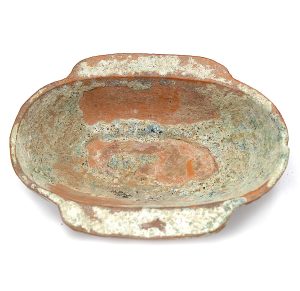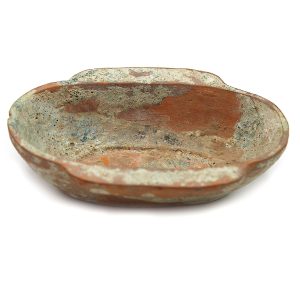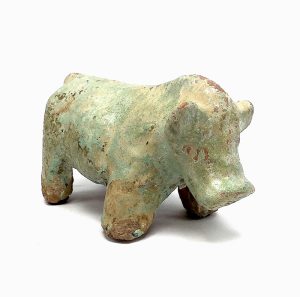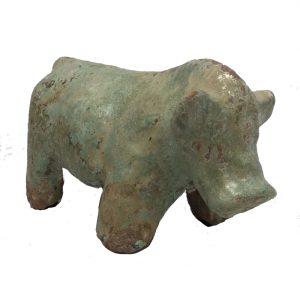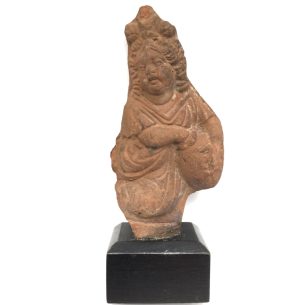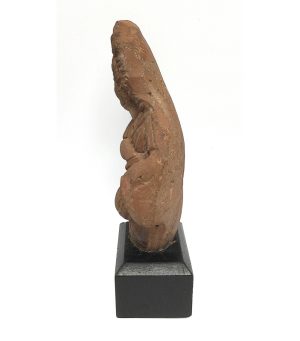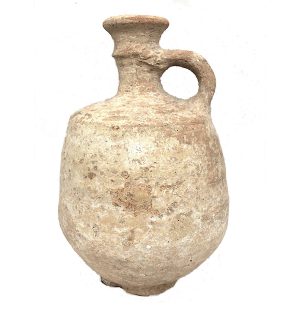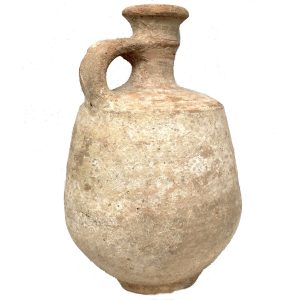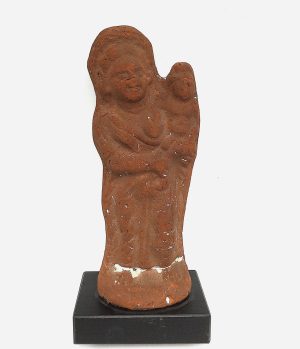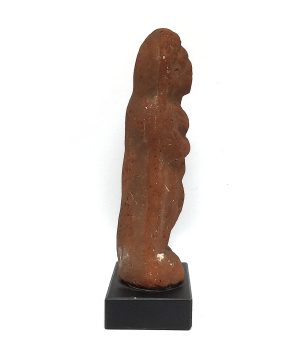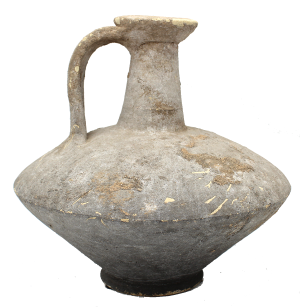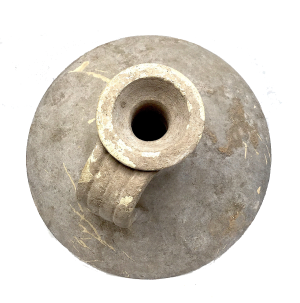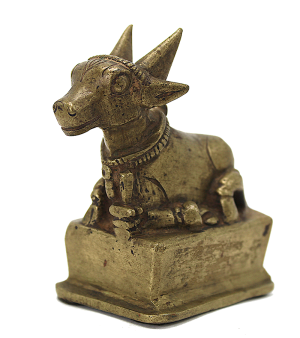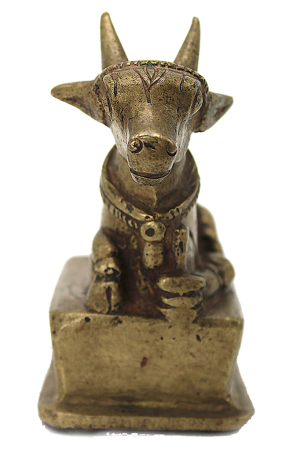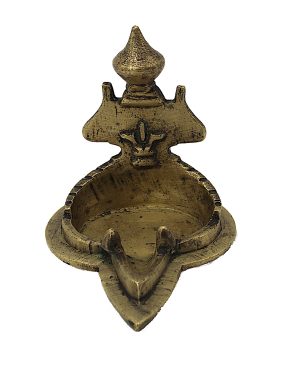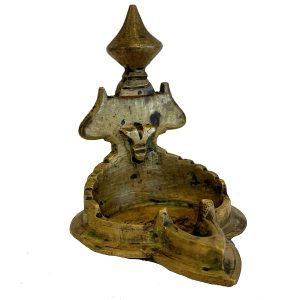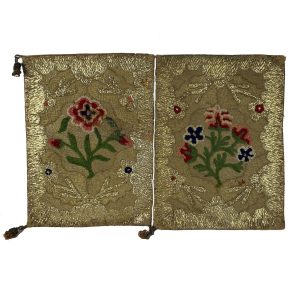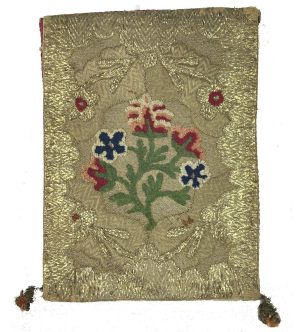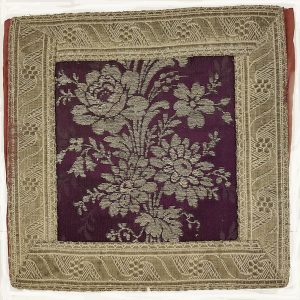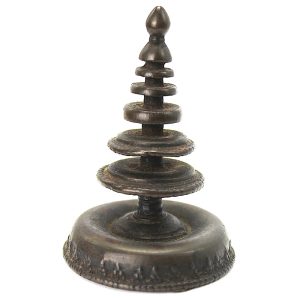Showing 1–12 of 99 results
-
Sale!


$775.00 Original price was: $775.00.$495.00Current price is: $495.00.
H: 4.5” W: 3” D: 2.75” | FREE SHIPPING WITHIN CONTINENTAL U.S.!
This Roman ceramic flagon is a uniquely shaped vessel used to store and pour potable liquids. A crème slip carinated jug with a high profile and a trefoil pouring spout, it has a strap handle attached from the carinated edge to just below the rim for easy handling. Roman coarse wars like this were use for liquids and to make offerings to household deities.
-


$450.00
Wing or ear cups (yushang), a term that describes its side flange-like additions to its ovoid body, appeared as early as the Zhou dynasty (1046-256 BCE) made in lacquer and later from a variety of materials. Lacquerware cups were used as dining vessels used for rituals and ceremonies contain fragrances, food or wine; and the…
-


$395.00
Mingqi are ancient earthenware pottery items usually made using a bivalve mould and covered with a lead glaze that fired to a dark green. The lead in the glaze often combined with tomb dampness for centuries creating a chemical reaction changing its coloring into a lustrous and iridescent green seen here. Han mingqi were ancestral…
-


$395.00
Ht: 6.5” W: 2.625” D: 1.75” | FREE SHIPPING WITHIN CONTINENTAL U.S.!
This ancient figurine is Harpocrates the Greek god of silence and secrets holding a jar made for a home shrine. He probably represents a royal and temple cult, as he wears a double crown symbolizing both Upper and Lower Egypt and his royal emblem signifies his association with the reigning Egyptian king, who was considered a manifestation of the Egyptian god Horus. Missing part of his right side when excavated, and no with no repairs this is a true slice of history. It pairs well with #1845 Ancient Pottery Figurine of Child Nurturer Goddess.
-
Sale!


$695.00 Original price was: $695.00.$550.00Current price is: $550.00.
H: 8.5” Dia: 5.5” | FREE SHIPPING within Continental U.S.!
This Biblical Period earthenware wine jug is rare because of its difficult chances of survival over such a long time period. Made in the Judea Holy Land, it has a tall globular body and a downward sloped shoulder that join together in a distinctive carinated edge running around its top.
-


$395.00
Ht: 6.75” W: 3” D: 2” | FREE SHIPPING WITHIN CONTINENTAL U.S.!
This Roman Egyptian figurine from Alexandria of a woman holding a young child is a Kourotrophos, a class goddess figures holding infants or children. Referred to as “child nurturers”, these were revered deities, cult figures and mortals who were also fertility symbols and protectors of the young. Made from a bivalve mold, this terracotta figurine was probably placed on a home altar for protection. Mother and child figures like this are universal and appear in cultures throughout the world. It pairs well with #1844 Ancient Harpocrates Figurine.
-
Sale!


$625.00 Original price was: $625.00.$495.00Current price is: $495.00.
H: 8.5” Dia: 9.75” | FREE SHIPPING WITHIN CONTINENTAL U.S.!
Made in the Roman North Africa, this ancient carinated ceramic flagon called coarse wear for daily use made of inexpensive durable clay was used to hydrate all kinds of people and on home altars for offerings to family deities. Carinated pottery, where the top and lower sections are angled in opposite directions forming a pointed edge, was common ancient pottery shape, this one with a handle.
-


$155.00
Nandi is among the most frequent Hindu deities worshiped in public places, temples, homes, or on a home altar throughout India. As one of Hinduism’s mythical animals, Nandi is Shiva’s vahana, (his mount that transports him), attendant and leader of his attendants and guardian of all four-footed animals. A recumbent image of Nandi on a…
-


$165.00
Metal oil lamps (diyas) made for deities in Hinduism are recognized by distinct designs, symbols or figures which identify specific deities to devotees wish to offer their prayers used in homes and temples for daily prayers (puja). This heavy brass antique votive from India is a Vishnu diya with a shallow yoni shaped cup, short…
-
Sale!


$195.00 Original price was: $195.00.$135.00Current price is: $135.00.
H: 10.5″” W: 10.5″” D: 0.5″” | FREE SHIPPING WITHIN CONTINENTAL U.S.
Hand made in a folder style, this Bolivian religious document holder possibly used for priests’ sermons or other important documents, is decorated on each side with brocaded purple fabric with gold thread. The finely brocaded stylized and symbolic passion flower designs are framed by geometric and curved gold borders and the inside and ends are lined in red fabric. Our images do not do it justice as they cannot capture light flickers from the interwoven gold threads and vibrant gold floral patterns.”
-
Sale!


$185.00 Original price was: $185.00.$135.00Current price is: $135.00.
H: 10.5″ W: 10.5″ D: 0.5″ | FREE SHIPPING WITHIN CONTINENTAL U.S.!
Hand made in a folder style, this Bolivian religious document holder possibly used for priests’ sermons or other important documents, is decorated on each side with brocaded purple fabric with gold thread. The finely brocaded stylized and symbolic passion flower designs are framed by geometric and curved gold borders and the inside and ends are lined in red fabric. Our images do not do it justice as they cannot capture light flickers from the interwoven gold threads and vibrant gold floral patterns.
-


$425.00
A stupa is a memorial shrine and a sacred burial mound to house sacred relics associated with the Buddha or other Buddhist saintly persons, a symbol of the Buddha’s enlightenment and a model of the Buddhist cosmos (McArthur, p. 179). Initially they were hemispherical mound-like shapes and were transformed in East Asia into a pagoda…
End of content
End of content

